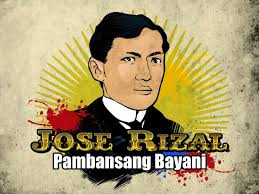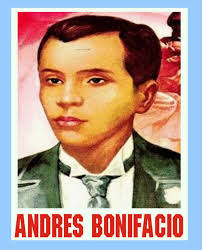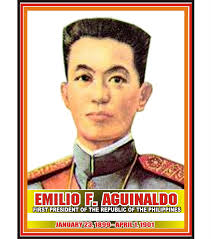What do I need to know by the end of this unit?
Topics:
- Political structure and economic, social and cultural effects of Spanish colonial system
- Philippine Revolution 1896
- Significance of Rizal, Bonifacio and Aguinaldo
- Spanish American War 1898
- Colonial rule by USA
- Beginnings of Nationalism
1. How did Spanish Imperialism in the Philippines begin? What were the main economic, social, cultural effects of the Spanish colonial system?
| 1_philippines_impact_of_spanish_frame.docx | |
| File Size: | 18 kb |
| File Type: | docx |
Remember, while we do need to have an overview of events prior to 1750 in order to understand the context, this should be nothing more than an overview understanding.
Your focus from today and the readings for home learning is to understand the main impacts of Spanish rule between 1750 and 1896.
Use the frame above to structure your learning today.
Your focus from today and the readings for home learning is to understand the main impacts of Spanish rule between 1750 and 1896.
Use the frame above to structure your learning today.
Resources for beginnings:
|
| ||||||||||||
Resources for impacts:
|
| |||||||||||||||||||
2. Diamond 9: Evaluating the most important impacts of the Spanish Colonisation on the Philippines
|
Create a diamond nine as a class under the heading:
Effects of Spanish Imperialism….the best….to the worst. Argue and justify to agree on the positioning - Then, in an individual copy, each student completes each box of the diamond nine with appropriate detail, using your mind map for the specific evidence - Write an evaluation at the end about which areas were most/ least successful |
| ||||||
3. The first stirrings of nationalism: 3 important figures
Read the Rizal, Bonifacio, Aguinaldo article about these 3 Filipino revolutionaries and then, the other 3 articles entitled "Simple Summary" (1 article on each man). Do a bar chart on A3 individually, but working in pairs to create the chart.
Show each person's relative importance to Philippine Nationalism.
On each bar write their biography, successes, failures and their effect on nationalism
The other articles are more complicated and give more detail. One on Riazal offers alternate perspectives.
Show each person's relative importance to Philippine Nationalism.
On each bar write their biography, successes, failures and their effect on nationalism
The other articles are more complicated and give more detail. One on Riazal offers alternate perspectives.
|
|
|
| ||||||||||||||||||
| aguinaldo_simple_summary.docx | |
| File Size: | 61 kb |
| File Type: | docx |
|
|
|
| ||||||||||||||||||
4. Nationalism builds: the Spanish are replaced by the Americans
As the 19th century came to a close and the 20th century began, nationalism continued to build slowly from the influences of Rizal, through Bonafacio to Aguinaldo. The Spanish Empire continued to weaken worldwide and in the wake of the Spanish-American War, the Americans replaced the Spanish as the imperial power in the Philippines. The Filipinos questioned the actions of the Americans and nationalism continued to build slowly.
Open the fairytale story document below. Read the article and complete the activity to further your understanding of the rise of nationalism in the Philippines.
Open the fairytale story document below. Read the article and complete the activity to further your understanding of the rise of nationalism in the Philippines.
|
|
| ||||||||||||
5. Spanish-American War 1898
The Spanish-American War began in Cuba but had repercussions across a number of Spanish colonies including Cuba, the Philippines, Guam and Puerto Rico.
To understand the reasons behind the war, watch the following video (top one in the link) and the one below and answer the question.
How and why were the Spanish imperialists replaced by the American imperialists?
Watch the video.
http://www.history.com/topics/us-presidents/theodore-roosevelt/videos/spanish-american-war
What were the American reasons for going to war with Spain?
To understand the reasons behind the war, watch the following video (top one in the link) and the one below and answer the question.
How and why were the Spanish imperialists replaced by the American imperialists?
Watch the video.
http://www.history.com/topics/us-presidents/theodore-roosevelt/videos/spanish-american-war
What were the American reasons for going to war with Spain?
6. Perspectives on the Spanish-American War and its effects on the Philippines?
Each student reads one of the 5 following sources to look at the Spanish American War and its effects on the “changeover” of imperialists:
A Splendid little War
Yellow Journalism….helped push US and Spain into war
The sinking of the Maine
The Spanish American War
Battle of Manila Bay
Get into groups of 5. Each person needs to have read a different article. Feed back. Make notes. Answer the inquiry question.
| a_splendid_little_war_3.docx | |
| File Size: | 96 kb |
| File Type: | docx |
| battle_of_manila_bay_5.docx | |
| File Size: | 722 kb |
| File Type: | docx |
| the_sinking_of_the_maine_1.docx | |
| File Size: | 98 kb |
| File Type: | docx |
| the_spanish_american_war_4.docx | |
| File Size: | 122 kb |
| File Type: | docx |
| yellow_journalism_2.docx | |
| File Size: | 64 kb |
| File Type: | docx |
7. What was the nature of American Imperialism in the Philippines?
Use the box of books (or an alternate variety of texts) to research the nature of American Imperialism in the Philippines.
Research the political structure, economic, social and cultural effects. Work in groups of 4. Come up with at least 3 points for each area. Create a class google doc. Choose a font colour, once all your points are decided, insert them in the google doc in your group’s colour.
As a class, discuss all the points and distill the google doc down to 5 most important points in each area (that is 20 points in total)
Everyone writes 1 point each on a piece of cardboard in big letters so they can be seen on the board. Write points in the same area (eg economic effects) on card of the same colour. There will be 5 points on 5 different cards of one colour. 20 cards in total.
Put the area headings on the board (political structure, economic, social and cultural effects). In each group rank the points. Blu-tac them onto the board in decided order…top is best effect of imperialism, bottom is worst. Look across the 4 columns and move the cards to again compare the relative importance across areas (so, eg, some political points may be higher than some social points)
Once the chart is finished, students can photograph it, or change their google doc to reproduce the chart in their saved copy.
Discuss the relative importance of the factors.
Research the political structure, economic, social and cultural effects. Work in groups of 4. Come up with at least 3 points for each area. Create a class google doc. Choose a font colour, once all your points are decided, insert them in the google doc in your group’s colour.
As a class, discuss all the points and distill the google doc down to 5 most important points in each area (that is 20 points in total)
Everyone writes 1 point each on a piece of cardboard in big letters so they can be seen on the board. Write points in the same area (eg economic effects) on card of the same colour. There will be 5 points on 5 different cards of one colour. 20 cards in total.
Put the area headings on the board (political structure, economic, social and cultural effects). In each group rank the points. Blu-tac them onto the board in decided order…top is best effect of imperialism, bottom is worst. Look across the 4 columns and move the cards to again compare the relative importance across areas (so, eg, some political points may be higher than some social points)
Once the chart is finished, students can photograph it, or change their google doc to reproduce the chart in their saved copy.
Discuss the relative importance of the factors.
| notes_on_us_imperialism.docx | |
| File Size: | 545 kb |
| File Type: | docx |
| cotterell_us_in_philippines_pp144-151_western_power_in_.pdf | |
| File Size: | 4205 kb |
| File Type: | |
8. What was the cause, nature and effect of nationalism in the Philippines?
It was the first nationalist movement in SE Asia. It was very different to other countries as local elites aligned themselves with Spain and the USA.
If you refer to pp129-132 of the Peter Church text, there is a good explanation of the differences between the Philippines and elsewhere, in its nationalism.
Complete a 3 column table, using the headings below. Use the resources you’ve already been given (3 revolutionaries’ articles and your text) to fill in this table:
Beginnings of Nationalism: Causes
Beginnings of Nationalism: Nature
Beginnings of Nationalism: Effects (National Identity by 1914?)
Evaluate the strengths and weaknesses of nationalism in the Philippines up to 1914.
If you refer to pp129-132 of the Peter Church text, there is a good explanation of the differences between the Philippines and elsewhere, in its nationalism.
Complete a 3 column table, using the headings below. Use the resources you’ve already been given (3 revolutionaries’ articles and your text) to fill in this table:
Beginnings of Nationalism: Causes
Beginnings of Nationalism: Nature
Beginnings of Nationalism: Effects (National Identity by 1914?)
Evaluate the strengths and weaknesses of nationalism in the Philippines up to 1914.



